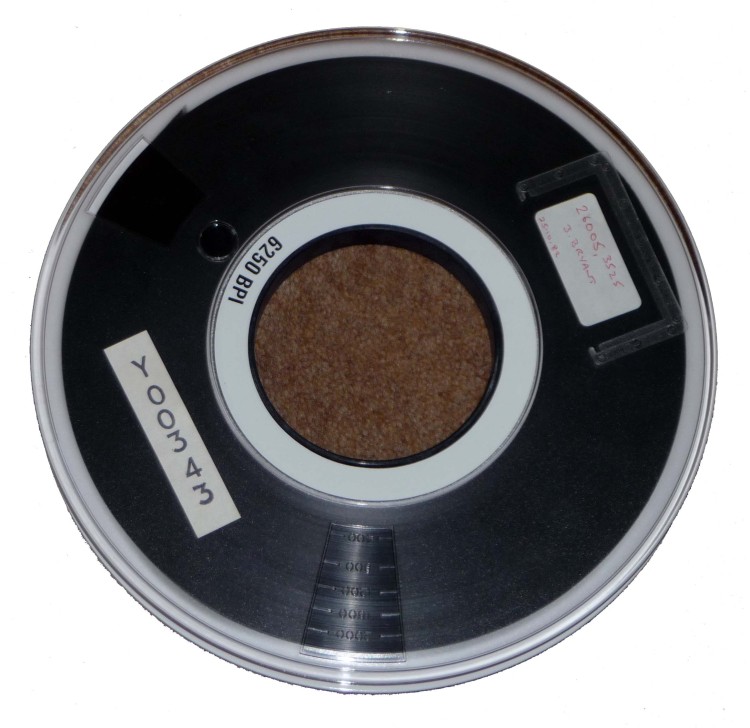9 Track Magnetic Storage Tape
| Home > Browse Our Collection > Peripherals > Miscellaneous > 9 Track Magnetic Storage Tape |
|
The IBM 2401 System/360 tape drives introduced the 9-track format Full-size reel of 9 track tape. The IBM System/360, released in 1964, introduced what is now generally known as 9 track tape. As with the earlier IBM 7 track format it replaced, the magnetic tape is ½ inch (12.7 mm) wide, but has 8 data tracks and one parity track for a total of 9 parallel tracks. Data is stored as 8-bit characters, spanning the full width of the tape (including the parity bit). Various recording methods are used to place the data on tape, depending on the tape speed and data density, including PE (phase encoding), GCR (group code recording) and NRZI (non-return-to-zero, inverted, sometimes pronounced "nur-zee"). Tapes came in various sizes up to 3,600 feet (1,100 m) in length. The standard size of a byte was effectively set at 8 bits with the S/360 and 9 track tape. The 3400 Series Magnetic Tape Units were introduced with the IBM System/370. The primary advantages of the 3400 system were the higher data density (6250 BPI) and the introduction of the "autoloader" cartridge. Prior to the autoloader cartridge, tapes were sealed in a plastic "tape seal belt" that surrounded the reel and provided contamination protection and rack-hanging capability. The 3420's autoloader cartridge enabled the tape operator to mount the reel directly on the hub without having to remove the seal belt. This provided a significant time savings since the operator did not have to remove/replace the belt or thread the tape onto the take-up reel. The maximum data capacity of a 2400 ft reel, blocked at 32,767 bytes and recorded at 6250 BPI was 170 megabytes. Typically, much smaller block sizes, such as 4K (4,096 bytes) were used, in which case the storage capacity of the tape was reduced by 33%, to 113 megabytes. This tape was used on the DEC PDP-10 in 1979. Date : 1979This exhibit has a reference ID of CH22005. Please quote this reference ID in any communication with the Centre for Computing History. |
|










